Synod: Here is the Preparatory Document
The Pope Will Open the Diocesan Phase on October 10; It Will Open in Individual Dioceses the Following Sunday. All Are Called to Take Part. No to Women’s Vote in the Final Assembly
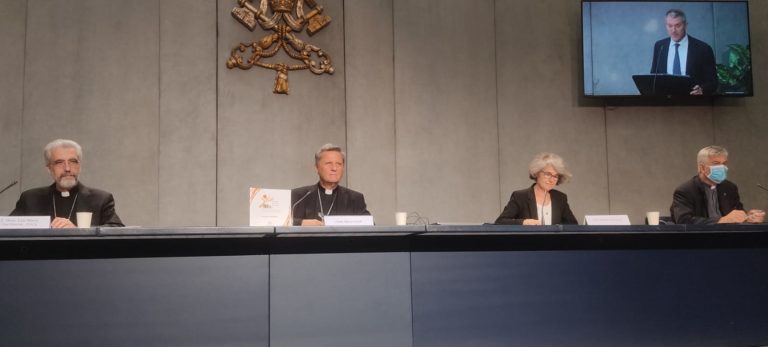
The Vatican today released the Preparatory Document for the upcoming Synod of Bishops.
“A Synodal Church, proclaiming the Gospel, “walks together.” How is this “walking together” realized in your local Church? What steps is the Spirit inviting us to take to grow in our “walking together?” These are the fundamental questions of the Preparatory Document of the 16th Ordinary General Assembly of the Synod of Bishops entitled “For a Synodal Church: Communion, Participation and Mission,” presented today in the Holy See Press Office by Cardinal Mario Grech, the Synod’s Secretary-General, by the Under-Secretaries of the Synod’s Secretariat, Monsignor Luis Marin de San Martin, and Sister Nathalie Becquart Xavière. Also taking part in the presentation were Professor Myriam Wijlens, Canon Law Ordinary at the University of Erfurt, Germany, and Father Dario Vitali, Ordinary at the Faculty of Theology of the Gregorian University, both Consultors of the Secretariat.
The Opening on October 10
It is “an itinerary that is inserted in the wake of the “aggiornamento” of the Church proposed by Vatican Council II,” which will begin on October 10 with the opening celebration by Pope Francis and, the following Sunday, in the individual dioceses by the Ordinaries.
The Biblical References
Cardinal Grech stressed in fact “the dispositions with which we prepare to live this essential stage of the life of the Church,” initiating liturgical celebrations “that constitute the heart and reveal the meaning of what we are going to do. A Synod isn’t understood except in the light of the action of the Holy Spirit.”
Referring to the two biblical images proposed in the Document, Jesus and the crowds and the meeting between Peter and Cornelius of the Acts, the Cardinal affirmed that the “Synod is a journey of discipleship, it’s a progressive coming close to the Lord, entering ever more in the logic of the Gospel. The whole journey of discernment is understood only as obedience to the Holy Spirit, otherwise, it would become a game of parties <and> the consultation of the People of God would end up by being reduced to a survey, closed within the mechanisms of public opinion. The Synod will succeed or fail in the measure in which it trusts the Holy Spirit.” In this connection, the Cardinal recalled that synodality “is the mature fruit of the reception of the Council.”
Correct Communication
Then he appealed for concrete communication. “The Synod isn’t a Parliament, the synodal process is not a game of parties in which one who has more strength subjects the other; it is an experience, an exercise of listening to the Spirit, of listening to one another. Help one another in two important challenges,” he asked the journalists. “To those that understand this key of spiritual reading, I ask to help us to spread it. To all goes the invitation not to constrain the Synod in the mechanism of a scoop, of sensational news.” It’s no accident that many of the questions were concentrated on women’s vote in the Assembly of Bishops, something “doesn’t let me be serene,” replied Grech. The question seems to be outside of discussion but, as Monsignor Marin stressed, the Synod is a participative process in which all, men and women, and also people that aren’t part of the Church, can and must contribute.
Modality of the Diocesan Phase
Monsignor Marin, who talked about “multiform unity,” confirmed three objectives of the consultation at the diocesan level: “It must be true, the widest possible and practical, not theoretical. The diocesan Bishop will be responsible for it, who will have to care for the praying dimension. He can appoint a referent, if possible a team that reflects the variety of the Church and conclude with a Synodal Assembly in every diocese. Coherence, enthusiasm, creativity, and courage are the keywords.” The process will continue with pre-synodal meetings at the Continental level, to make room for the widest possible participation, and the seven final Documents will serve to prepare the Instrumentum Laboris to give to the Assembly of Bishops.
The Objectives
Hence the Church is questioning herself on the meaning of synodality in the Third Millennium. The Document points out the principal objectives ”for the quality of ecclesial life and the development of the evangelization mission, and “that breaks down synodality as the form, style, and structure of the Church.”
In sum, to remember how the Spirit has guided the Church’s journey in history and which today calls to be, at the same time, witnesses of the love of God: to live a participative and inclusive ecclesial process; to recognize and appreciate the richness and variety of the gifts and charisms that the Spirit bestows freely; to experience participative ways to exercise the responsibility of proclaiming the Gospel and the commitment to build a more beautiful and habitable world; to examine how responsibility and power are lived in the Church and the structures with which they are managed.
And again: to accredit the Christian community as a credible subject and reliable partner in paths of social dialogue, healing, reconciliation, inclusion and participation, reconstruction of democracy, promotion of fraternity and social friendship; regeneration of relations between members of the Christian communities as well as between communities and other social groups; favoring the enhancement and appropriation of the fruits of recent synodal experiences at the universal, regional, national and local level.
The Document has 12 pages, subdivided into four chapters and 32 points. It will be useful to prepare the synodal journey in the first phase, that “of listening and consultation of the People of God in the local Churches (October 2021 — April 2022).”
The Context
Addressing the present situation, the Document stresses that we ”cannot hide the fact that the Church herself must address the lack of faith and corruption also in her interior.” The reference is, in particular, to the thorny question of sexual abuses, of power, and of conscience. “The whole Church is called to deal with the weight of a culture permeated with clericalism, which she inherits from her history, and of forms of exercise of authority on which are inserted several types of abuses.”
However, reasons for hope are not lacking. “Despite our infidelity, the Spirit continues to act in history and to show its vivifying power. In fact, in the furrows dug by the sufferings of all sorts endured by the human family and the People of God new languages of the faith are flowering and new ways that are able — not only to interpret events from a theological point of view –but of finding in trial reasons to re-found the journey of Christian and ecclesial life.
The Divisions
Another knot is that of Christian minorities in difficulty but also of wounds caused by those that foment divisions in the Church. “Within this context, synodality represents the highway for the Church,” states the Document. However, a synodal Church, in a journey “to which we are all called” is also “a prophetic sign especially for a community of nations incapable of proposing a shared project, through which to pursue the good of all: to practice synodality is today for the Church the most obvious way to be “universal sacrament of salvation.”
The last part of the Document takes up again “the fundamental question.” Therefore, some concrete actions are indicated to follow on three distinct planes: the style with which the Church lives and operates ordinarily; the ecclesial structures and processes; the synodal processes and events. The Document ends listing “ten thematic nuclei for further reflection”: the travel companions; to listen, to take the floor, to celebrate, to further co-responsibility in the mission; to dialogue in the Church and in society; to dialogue with other Christian Confessions; as well as participation, discernment, decision, and formation to synodality. Finally, there is an invitation to make a report on some ten pages that summarize the consultation.
The Vademecum
Presented also was the vademecum, available on the Synod’s Website, which will be a useful instrument for the Bishops in carrying out this first phase.
Full Document
Translation by Virginia M. Forrester
Related
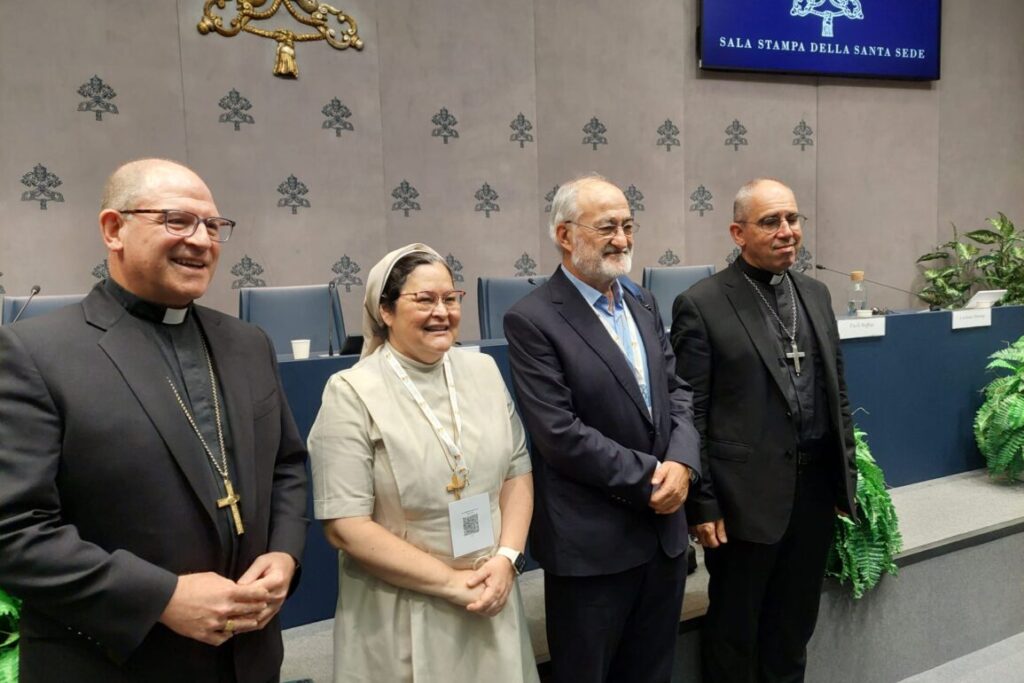
Fiducia Supplicans and the German Synod, Cardinal López Romero responds
Hernán Sergio Mora
05 October, 2024
4 min
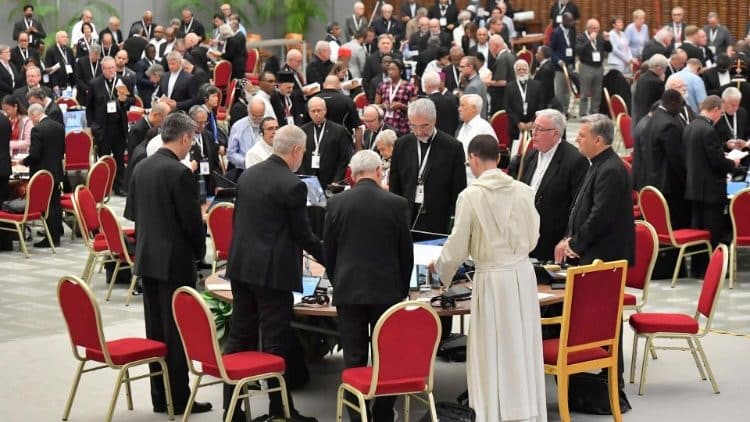
Anna Rowlands: ‘Communion is our being and our doing’
Exaudi Staff
09 October, 2023
2 min
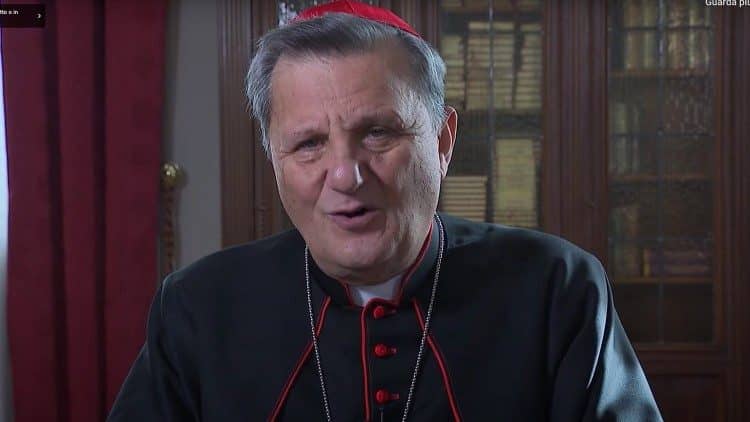
Without Prayer there will be no Synod
Exaudi Staff
15 September, 2023
4 min
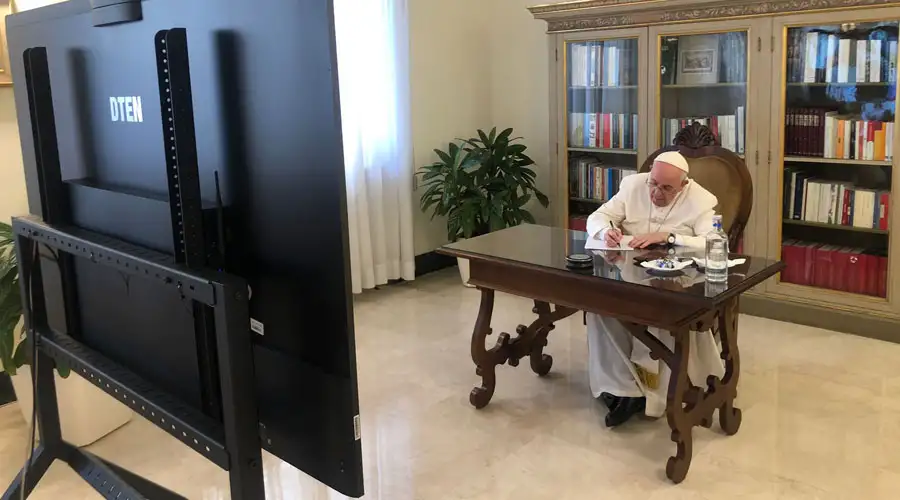
Council of Cardinals: Development of the Synod’s Works
Alba Montalvo
16 December, 2021
2 min
 (EN)
(EN)
 (ES)
(ES)
 (IT)
(IT)

